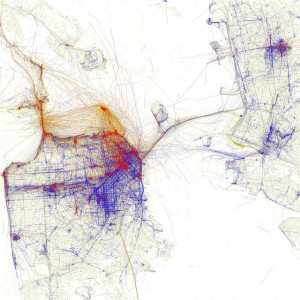TALK
I propose a discussion that explores ways to better activate museums and similar spaces through the intersection of often-isolated humanities disciplines and the intelligent use of technology.
At it’s core, this proposal aims to create spaces for people to explore new genres, and to bridge an artificially constructed socio-political divide between those interrelated genres. Historians can better understand contemporary art, artists can recontextualize historical objects, and music can facilitate a deeper engagement with them both. This can be achieved through an unlimited number of combinations, but we can start by discussing, critiquing, and building upon some examples provided below.
How can we refresh static historical organizations? By inviting institutional critique at the hands of artist-curators who can reframe permanent collections to break away from a traditionally linear format and start a new dialogue around historical content. Case in point: Fred Wilson’s “Mining the Museum” at the Maryland Historical Society.
How can we utilize music to provoke broader connectivity, and help visitors engage with the museum in non-traditional ways? Thinking in terms of: Scapes, an interactive sound installation, which activates the sculpture garden at the deCordova Museum; The Art of Music Touch Table, which draws tactile comparisons between the composition of art and music at The San Diego Museum of Art; or Music for Museums at the White Chapel Gallery, which draws on the legacy of John Cage and Erik Satie in exploring soundscaping and pushing the limits of how visitors perceive gallery space.
How do we activate art, historical content, and our surroundings with technology without overshadowing the power of an object, artwork or immersive experience? Nicholas Henchoz, director of “Gimme More” at Eyebeam, New York, said: “Augmented reality allows everyday objects to tell their stories, reveal information and interact with users in real time. What transpires as a result is a radical shift of interdependence between the object and the information it conveys.” In addition, animating historical photos deconstructs the barrier between the past and the present—making historical content more relevant to your average visitor.




